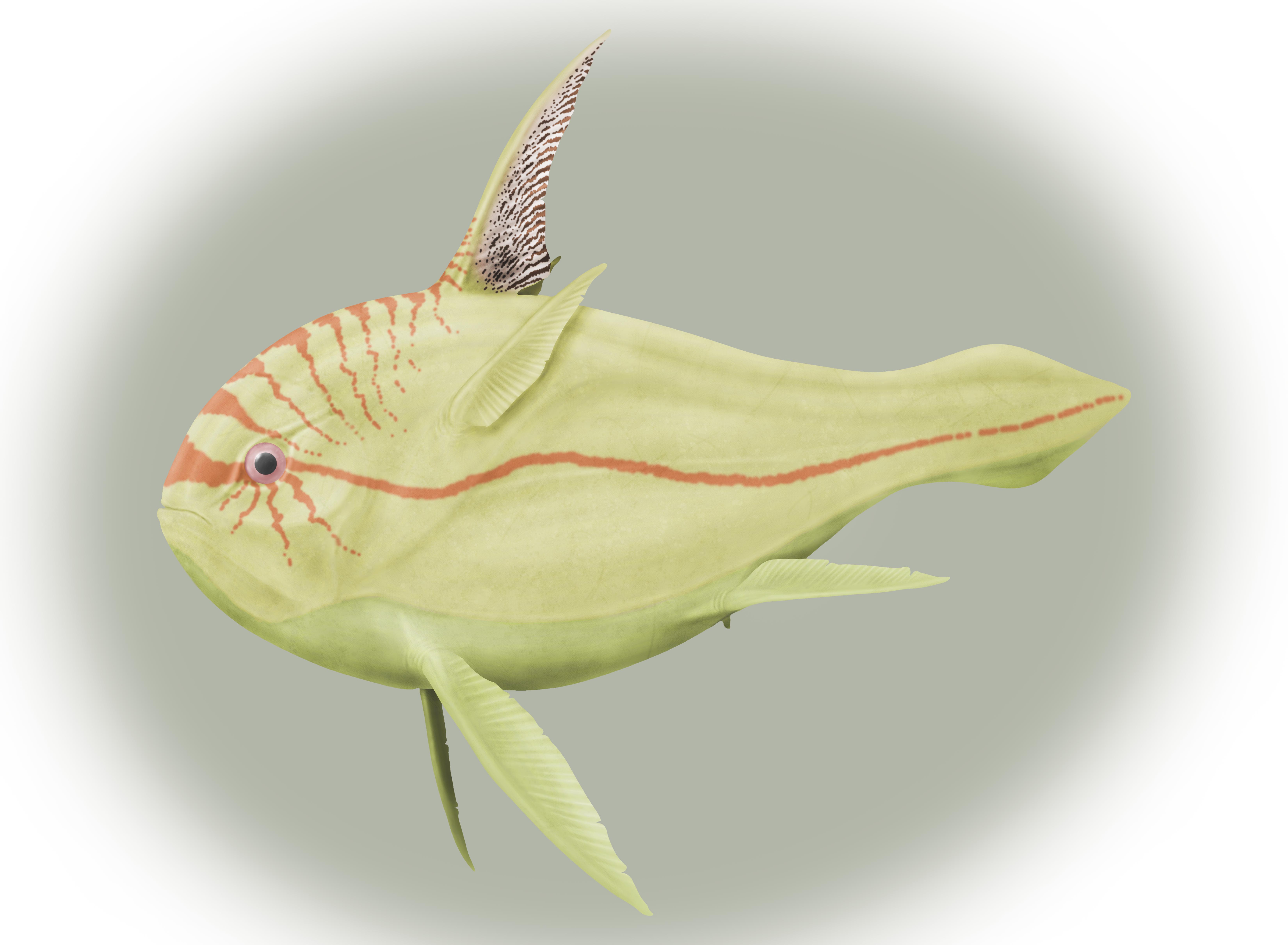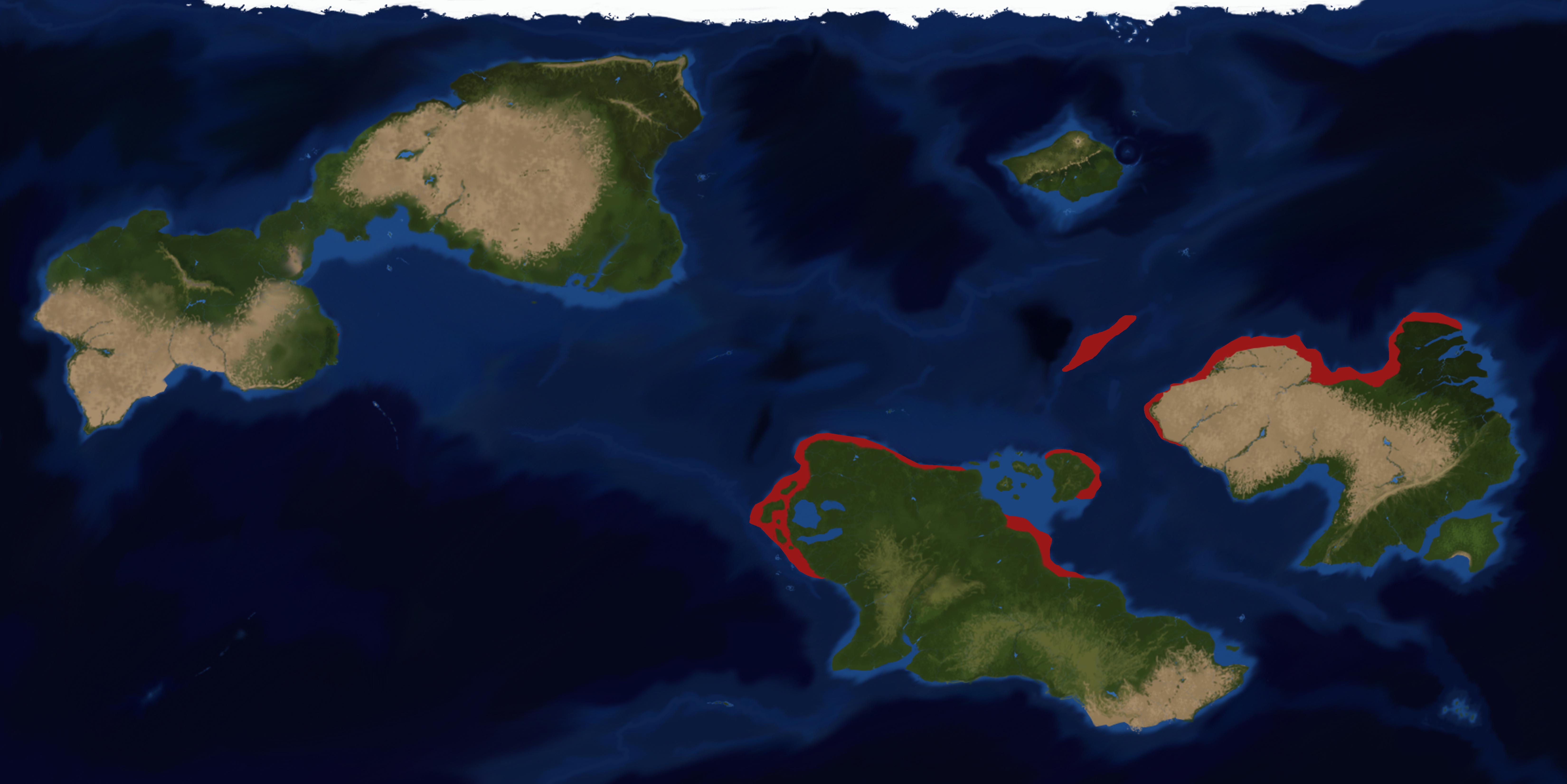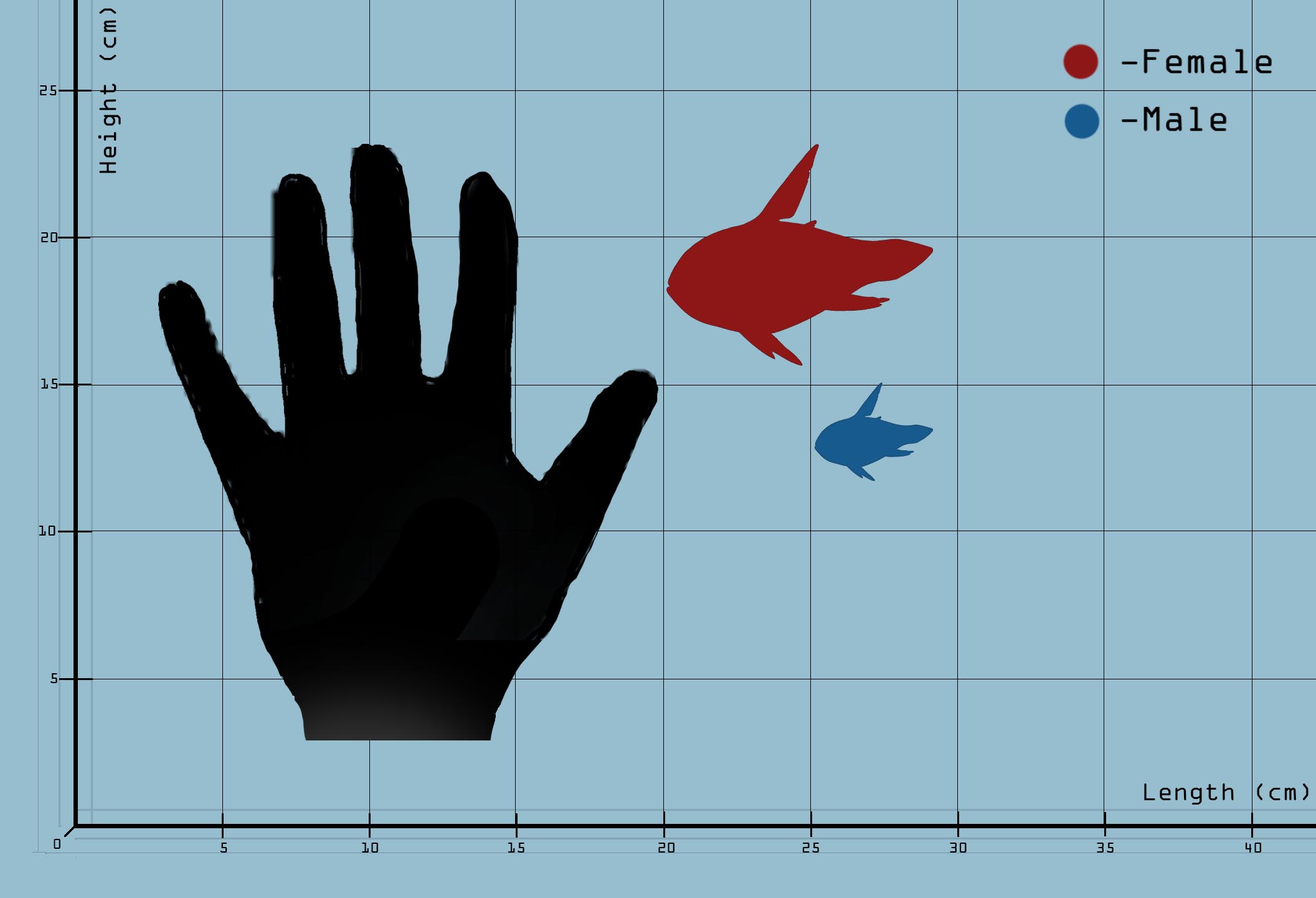Common Lemonfish
Parafraxĭnocitri tropikós is a small sized dweller of the southern reefs.
Normally found in large schools of several dozens specimens, P. tropikós are incredibly agile creatures living an opportunistic lifestyle, eating both plant matter and carrion.
Parafraxĭnocitri is the only genus in the Selenopiscoidea to have a reduced gill fan and one of the few to have only one single dorsal fin (Constable, 2488).
While its correlation with Esavelidae remains unclear, the modern consensus is that Parafraxĭnocitri is an advanced Cuspinninidae.
Trait unique to Parafraxĭnocitri in the Selenopiscoidea is the thin fin structure which would seem almost useless for locomotion.
P. tropikós takes its name from the yellow color palette and from the unusual shape of the body which resemble an Earth’s lemon (Citrus × limon).
Popular amphibian in aquariology, although quite difficult to keep given the specific conditions it needs.
Basic Information
Anatomy
- Cranial armor completely absorbed by chondrocranium.
- Cranium rounded in shape.
- Body Rounded with slight caudo-dorsal compression near the Gill fan.
- Gill fan reduced with low ridges.
- Single dorsal fin, unsual trait for the family.
- Anal I and II reduced and spear shaped; same for Pectoral and dorsal.
- Lack of caydal fins, another rare trait to the family.
Genetics and Reproduction
Polyandrous species.
Males and females enter heat once a month.
Males enter the active stage for a week; they can be recognized by the swelling of the parapenial sac, the inability to retracs the parapenis and the brightening of the colors in both skin and eyes.
Females enter the active stage for a week and a half; they can be recognized by the swelling of the duct, the fast vibration of the fins when still and the brightening of the eyes.
A single female will attract males by standing still in the under-reef; the more hidden she is, the more males she will attract.
For the next one to three days, depending on when the mates find the female, the little group will stay in their hideout; the female will mate multiple times with all the males, no priority or dominance in the order.
After the mating process is over, the female will incubate the eggs inside the duct for twenty days, laying them close to hatching.
The eggs will be laid and attched to the underside of the armored plant the female used as shelter.
Soon after hatching, the spawns will start bottom feeding on micro organisms in the organogenous sand.
Growth Rate & Stages
A spawn will mature in two to three days.
Ontogenesis not marked.
Loss of natal aculeus in one hour from birth.
Ecology and Habitats
Epipelagic animals of the neritic zone (from 0 to 15 m deep).
They live most of their life just out of the under-reef but will find shelter there if needed.
Dietary Needs and Habits
The spawns will feed exclusively on microbial fauna laying in the sand.
Adults will feed on floating algae and will happily tear apart small soft bodied invertebrates for a protein boost (such as Intestinal Tube Worms and Anomalonychophorans).
Biological Cycle
Sexual fertility comes at three weeks of age, will remain fertile until death.
They will remain exclusively in the under-reef for the first two weeks of life before swimming outside of it and learning to feed on floating microbial algae.
Additional Information
Social Structure
This amphibian is very social, living in shoals of a few dozen specimens.
They enjoy grooming eachother and will collaborate in taking down the biggest soft bodied invertebrates.
Domestication
Moderately popular as an aquarium animal for professional aquariologists.
Difficult to keep due to habitat and feeding requirements.
Uses, Products & Exploitation
Unpalatable, moderate importance in the pet trade.
Geographic Origin and Distribution
Perception and Sensory Capabilities
Animal bases itself on sight.
Symbiotic and Parasitic organisms
They live in symbiosis with the armored plants composing the reefs they live in.
Scientific Name
Eoichthyia; Tartarosomnia; Rotunducephalidae; Gladiopinnoidea; Quadratocephaloidea; Selenopiscoidea ; Cuspinninidae; Citrinae; Parafraxĭnocitri; P. tropikós
Lifespan
4 years
Conservation Status
LEAST CONCERN: No measures underway for the protection of this animal.
Population trend: STABLE
Average Weight
10 to 50 gr
Body Tint, Colouring and Marking
Yellow body with orange striping.
Dorsal fin membrane from a light ruddy to a whitish color with black striping.
Eye is reddish.
Remove these ads. Join the Worldbuilders Guild












Comments